Effect of Initial Stress on an SH Wave in a Monoclinic Layer over a Heterogeneous Monoclinic Half-Space
Abstract
1. Introduction
2. Problem Formulation
3. SH-Wave in Homogeneous Monoclinic Layer
4. SH-Wave in Heterogeneous Monoclinic Half Space
5. Boundary Conditions
6. Dispersion Relation
7. Particular Case
8. Numerical Results
9. Conclusions
- An increase in the coupling parameter and position parameter increases the phase velocity.
- The phase velocity decreases by increasing the heterogeneous parameters.
- The magnitude of phase velocity is greater in the absence of a common surface compared with the absence of an upper free surface.
Author Contributions
Funding
Institutional Review Board Statement
Informed Consent Statement
Data Availability Statement
Acknowledgments
Conflicts of Interest
References
- Jeffreys, H. The Effect on Love Waves of Heterogeneity in the Lower Layer. Geophys. J. Int. 1928, 2, 101–111. [Google Scholar] [CrossRef]
- Bullen, K.E. The problem of the earth’s density variation. Bull. Seismol. Soc. Am. 1940, 30, 235–250. [Google Scholar] [CrossRef]
- Wilson, J.T. Surface waves in a heterogeneous medium. Bull. Seismol. Soc. Am. 1942, 32, 297–304. [Google Scholar] [CrossRef]
- Dhua, S.; Chattopadhyay, A. Wave propagation in heterogeneous layers of the Earth. Waves Random Complex Media 2016, 26, 626–641. [Google Scholar] [CrossRef]
- Alam, P.; Kundu, S.; Gupta, S. Dispersion study of SH-wave propagation in an irregular magneto-elastic anisotropic crustal layer over an irregular heterogeneous half-space. J. King Saud Univ.–Sci. 2018, 30, 301–310. [Google Scholar] [CrossRef]
- Khan, A.A.; Umar, A.; Zaman, A. Rayleigh waves propagation in anisotropic layer superimposed a monoclinic medium. Indian J. Phys. 2019, 95, 449–457. [Google Scholar] [CrossRef]
- Ilyashenko, A.V.; Kuznetsov, S.V. SH waves in anisotropic (monoclinic) media Z. Angew. Math. Phys. 2018, 17, 69. [Google Scholar] [CrossRef]
- Singh, B.; Yadav, A.K. Plane wave in a rotating monoclinic magneto-thermoelastic medium. J. Eng. Phys. Phys. 2016, 89, 1393–1399. [Google Scholar]
- Kumar, S.; Pal, P.C.; Majhi, S. Reflection and transmission of plane SH-waves through an anisotropic magnetoelastic layer sandwiched between two semi-infinite inhomogeneous viscoelastic half-spaces. Pure Appl. Geophy. 2015, 172, 2621–2634. [Google Scholar] [CrossRef]
- Zhang, Y.; Xu, G.; Zheng, Z. Terahertz waves propagation in an inhomogeneous plasma layer using the improved scattering-matrix method. Waves Random Complex Media 2020, 1–15. [Google Scholar] [CrossRef]
- Rao, Q.; Xu, G.; Wang, P.; Zheng, Z. Study on the Propagation Characteristics of Terahertz Waves in Dusty Plasma with a Ceramic Substrate by the Scattering Matrix Method. Sensors 2021, 21, 263. [Google Scholar] [CrossRef] [PubMed]
- Rao, Q.; Xu, G.; Wang, P.; Zheng, Z. Study of the Propagation Characteristics of Terahertz Waves in a Collisional and Inhomogeneous Dusty Plasma with a Ceramic Substrate and Oblique Angle of Incidence. Int. J. Antennas Propag. 2021, 2021, 6625530. [Google Scholar] [CrossRef]
- Biot, M.A. The Influence of Initial Stress on Elastic Waves. J. Appl. Phys. 1940, 11, 522–530. [Google Scholar] [CrossRef]
- Chatterjee, M.; Dhua, S.; Chattopadhyay, A.; Sahu, S.A. Reflection and Refraction for Three-Dimensional Plane Waves at the Interface between Distinct Anisotropic Half-Spaces under Initial Stresses. Int. J. Géoméch. 2016, 16, 04015099. [Google Scholar] [CrossRef]
- Singh, A.K.; Das, A.; Parween, Z.; Chattopadahyay, A. Influence of initial stress, irregularity and heterogeneity on Love-type wave propagation in double pre-stressed irregular layers lying over a pre-stressed half-space. J. Earth Syst. Sci. 2015, 124, 1457–1474. [Google Scholar] [CrossRef][Green Version]
- Abd-Alla, A.M.; Abo-Dahab, S.M.; Kilany, A.A. SV-waves incidence at interface between solid-liquid media under electromagnetic field and initial stress in the context of three thermoelastic theories. J. Therm. Stresses 2016, 39, 960–976. [Google Scholar] [CrossRef]
- Verma, A.K.; Chattopadhyay, A.; Singh, A.K. Influence of Heterogeneity and Initial Stress on the Propagation of Rayleigh-type Wave in a Transversely Isotropic Layer. Procedia Eng. 2017, 173, 988–995. [Google Scholar] [CrossRef]
- Khan, A.A.; Afzal, A. Influence of initial stress and gravity on refraction and reflection of SV wave at interface between two viscoelastic liquid under three thermoelastic theories. J. Braz. Soc. Mech. Sci. Eng. 2018, 40, 208. [Google Scholar] [CrossRef]
- Tomar, S.K.; Kaur, J. Shear waves at a corrugated interface between anisotropic elastic and visco-elastic solid half-spaces. J. Seism. 2007, 11, 235–258. [Google Scholar] [CrossRef]
- Whittaker, E.; Watson, G.N. A Course of Modern Analysis; Universal Book Stall: New Delhi, India, 1990. [Google Scholar]
- Gubbin, D. Seismology and Plate Tectonics; Cambridge University Press: Cambridge, UK, 1990. [Google Scholar]
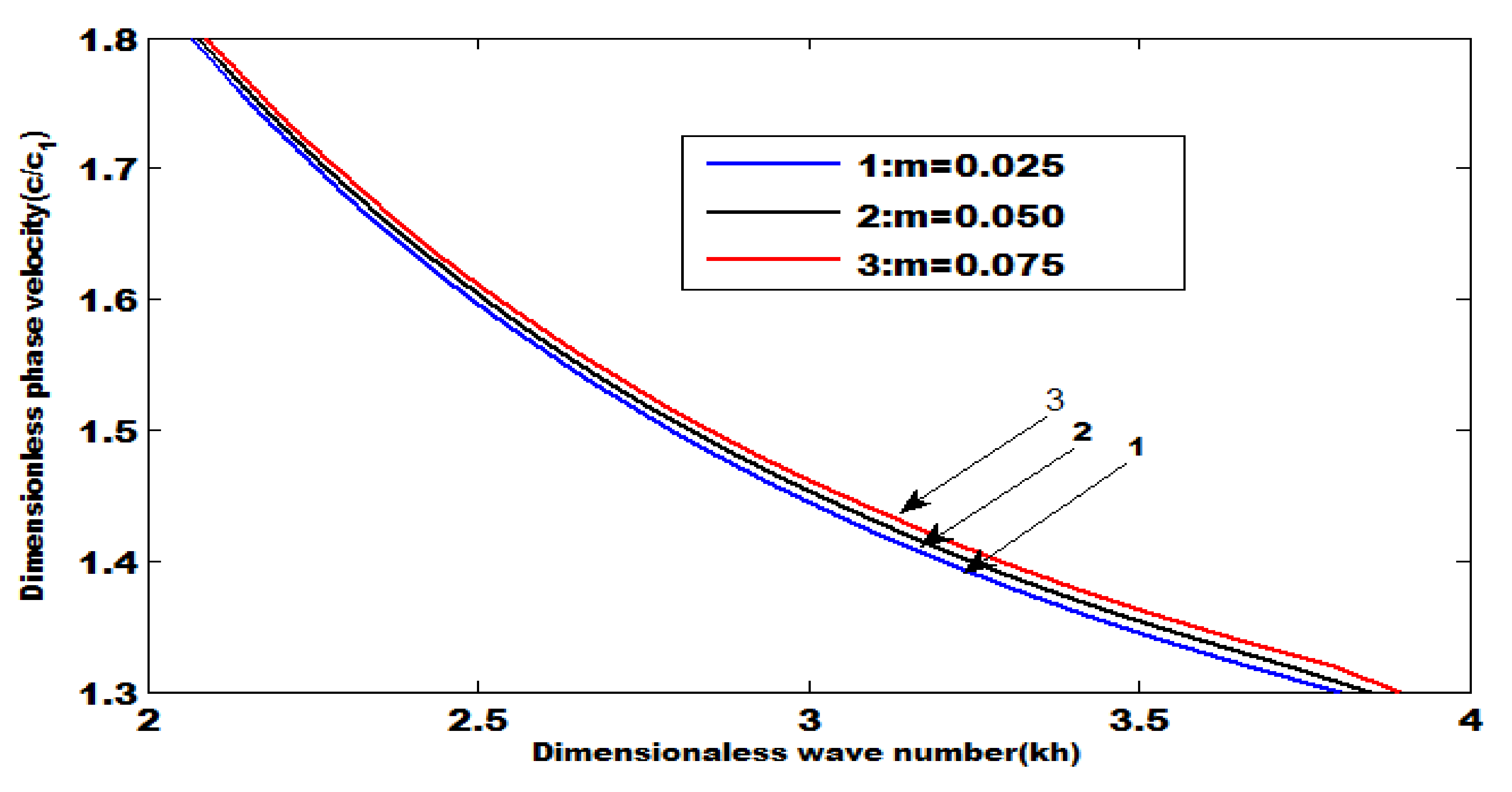
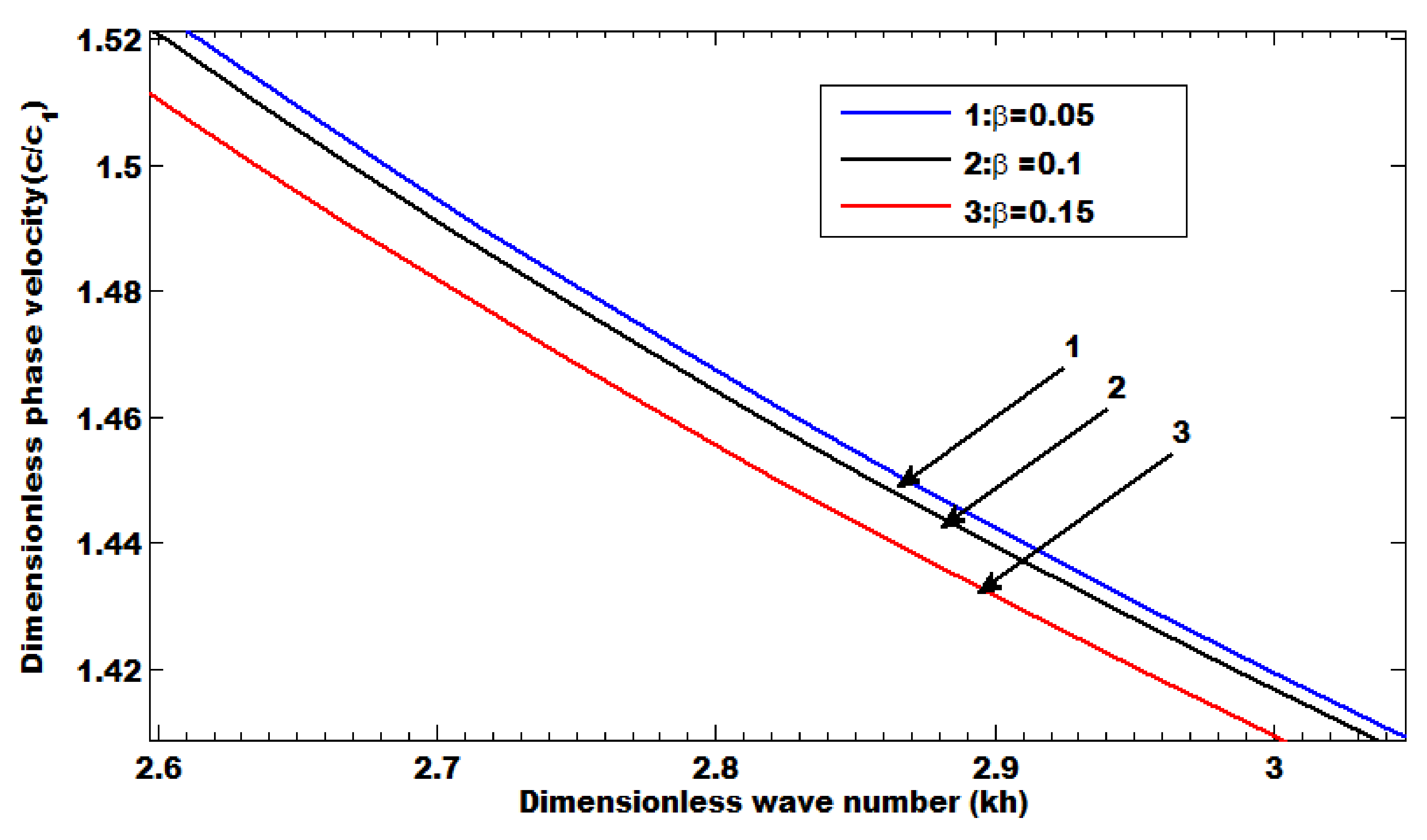
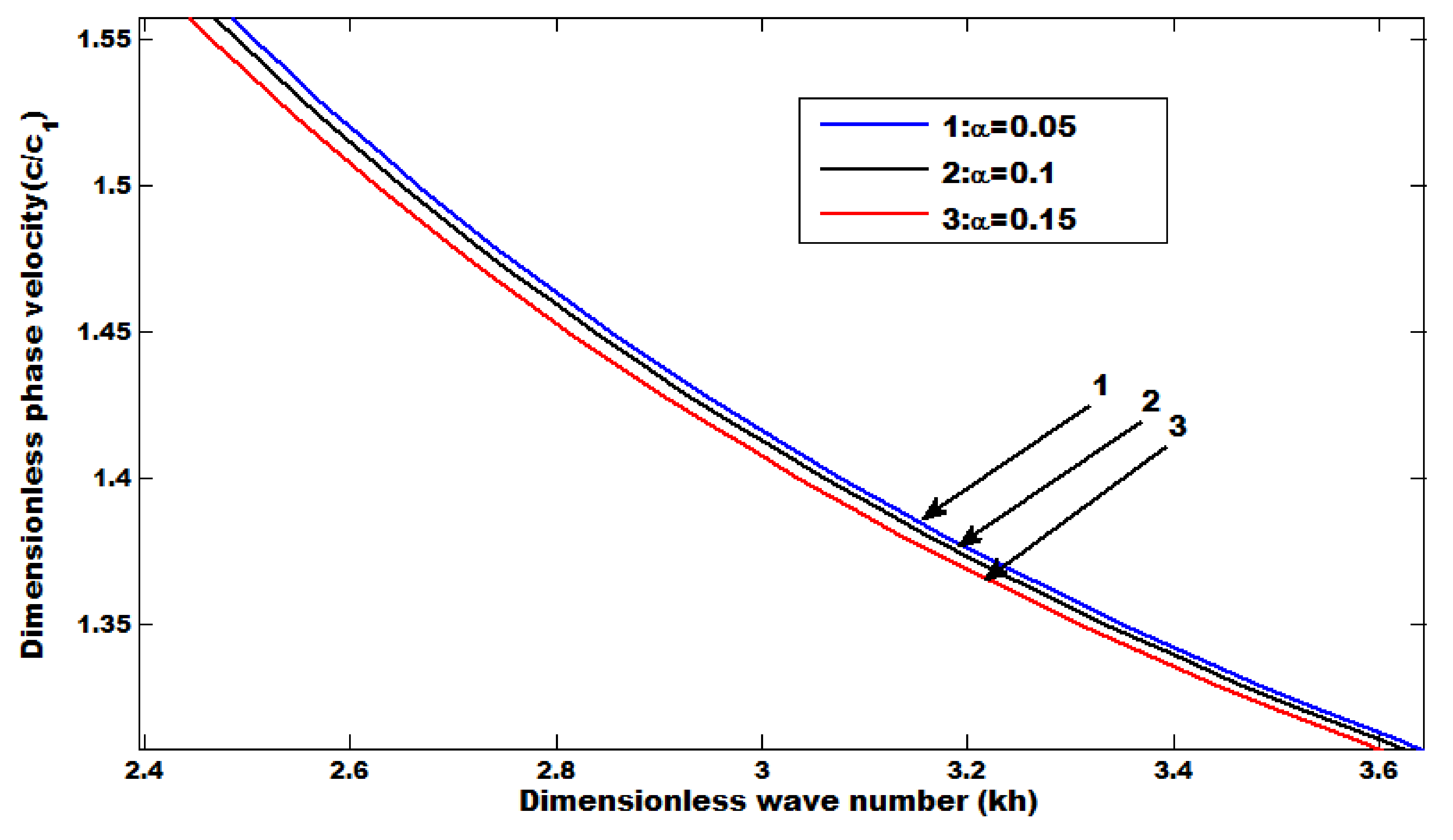
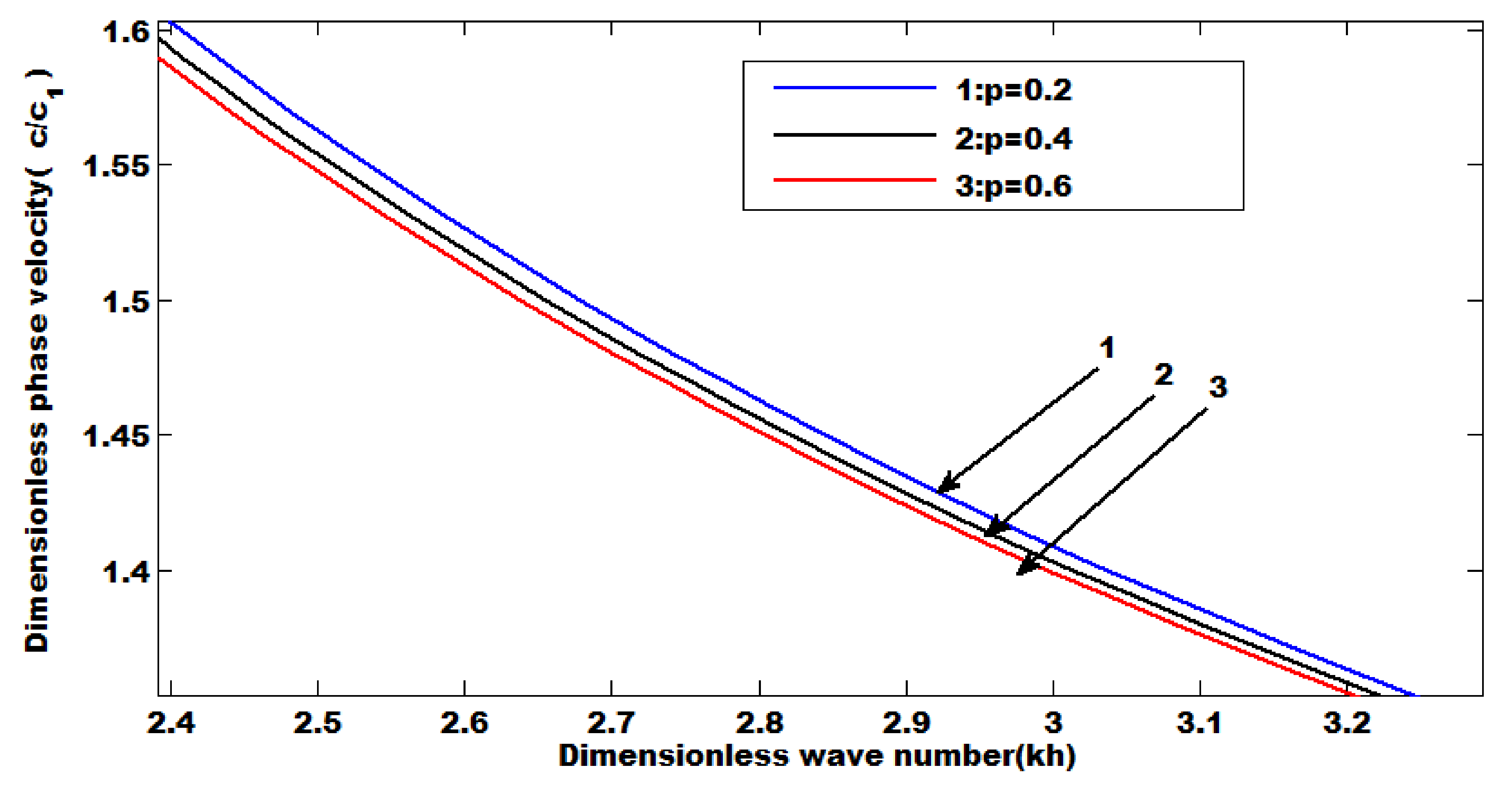
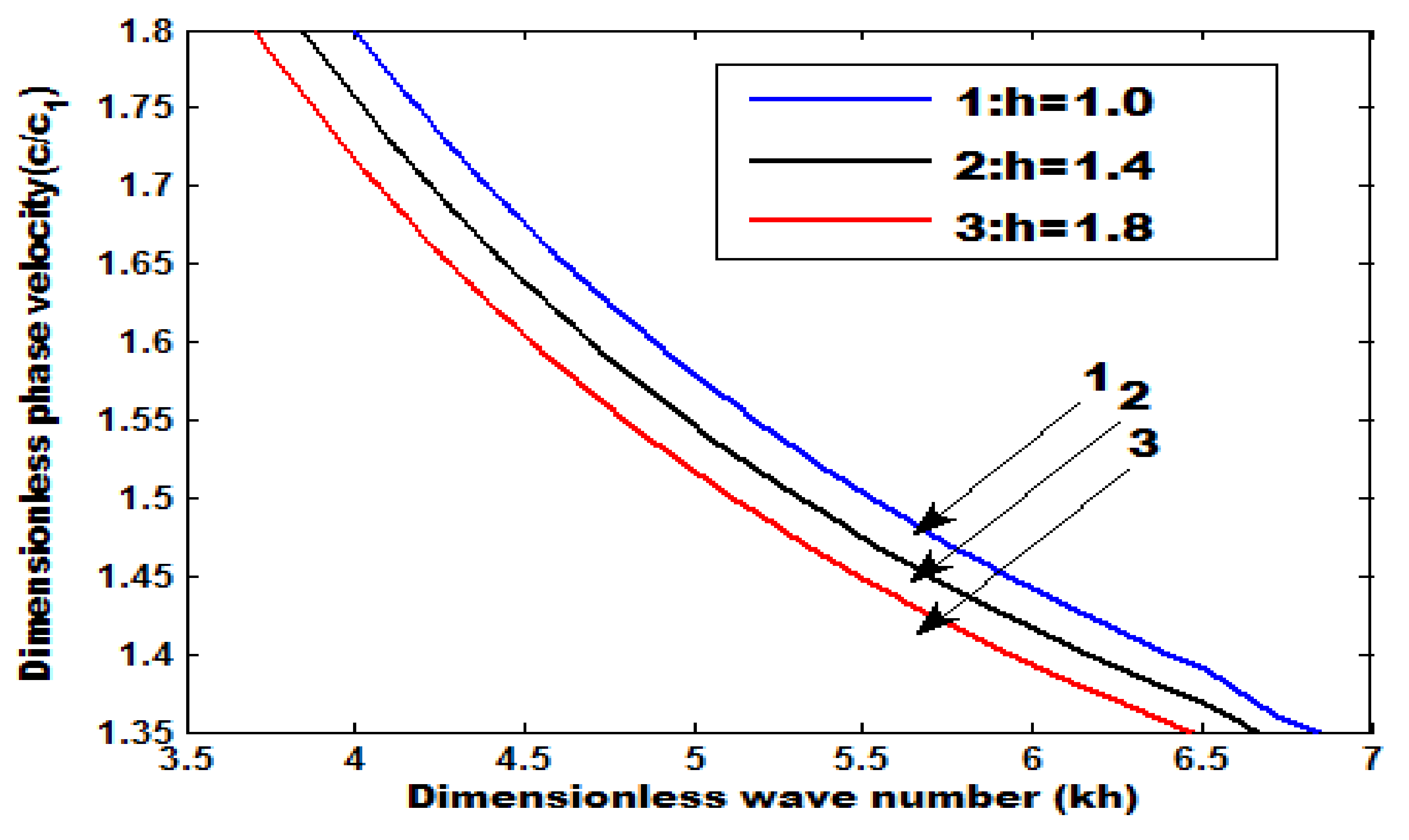
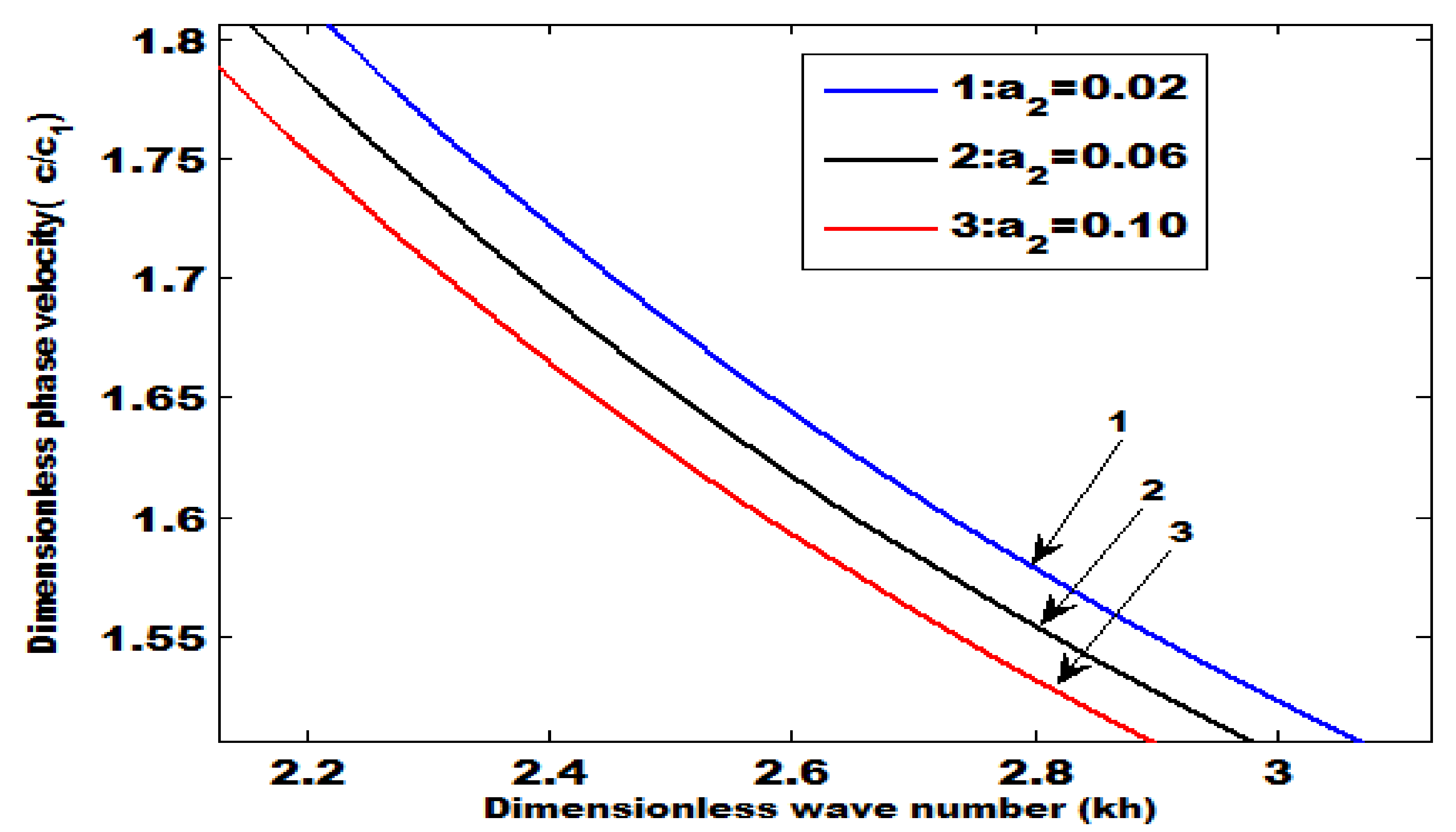
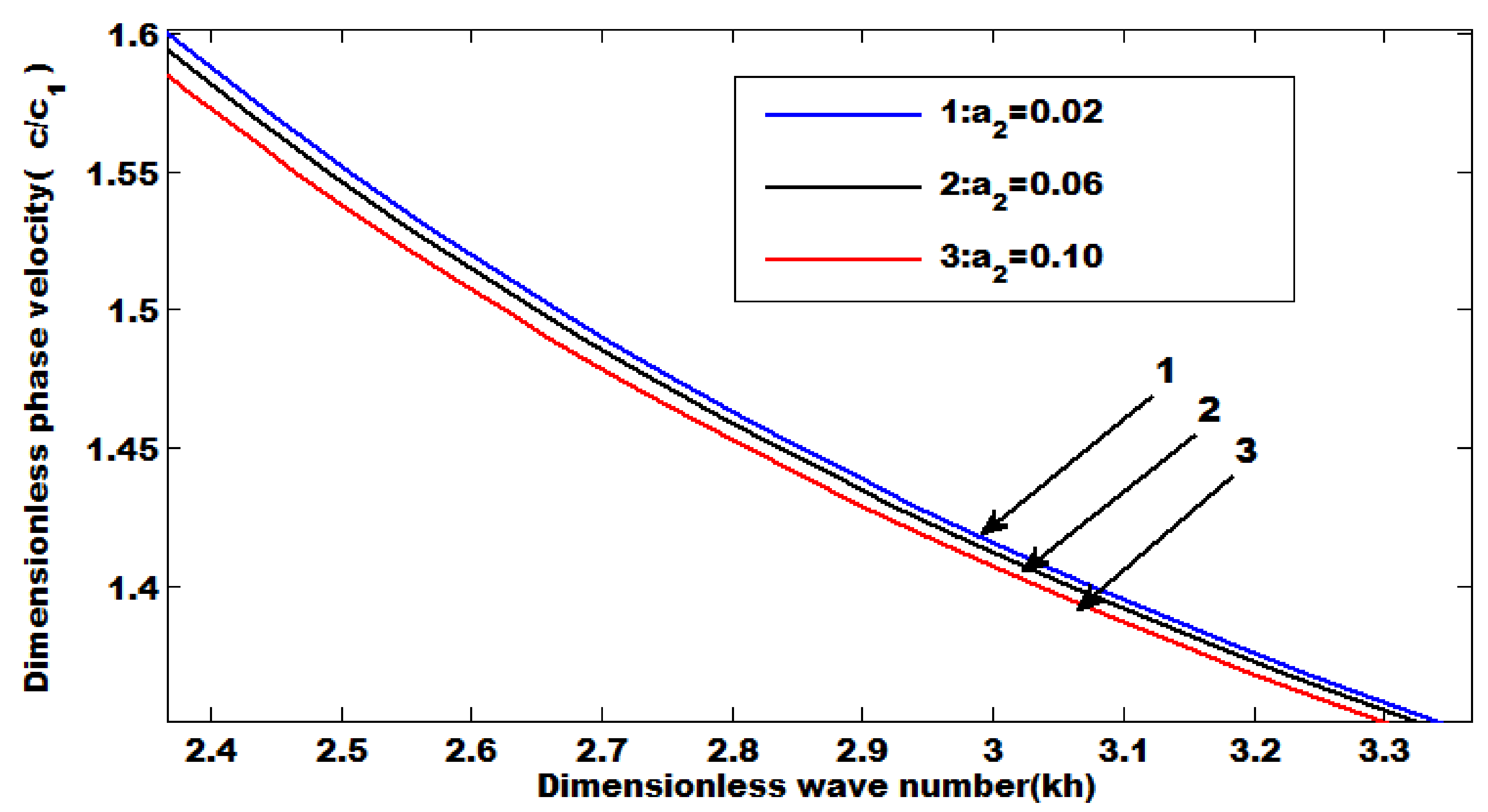
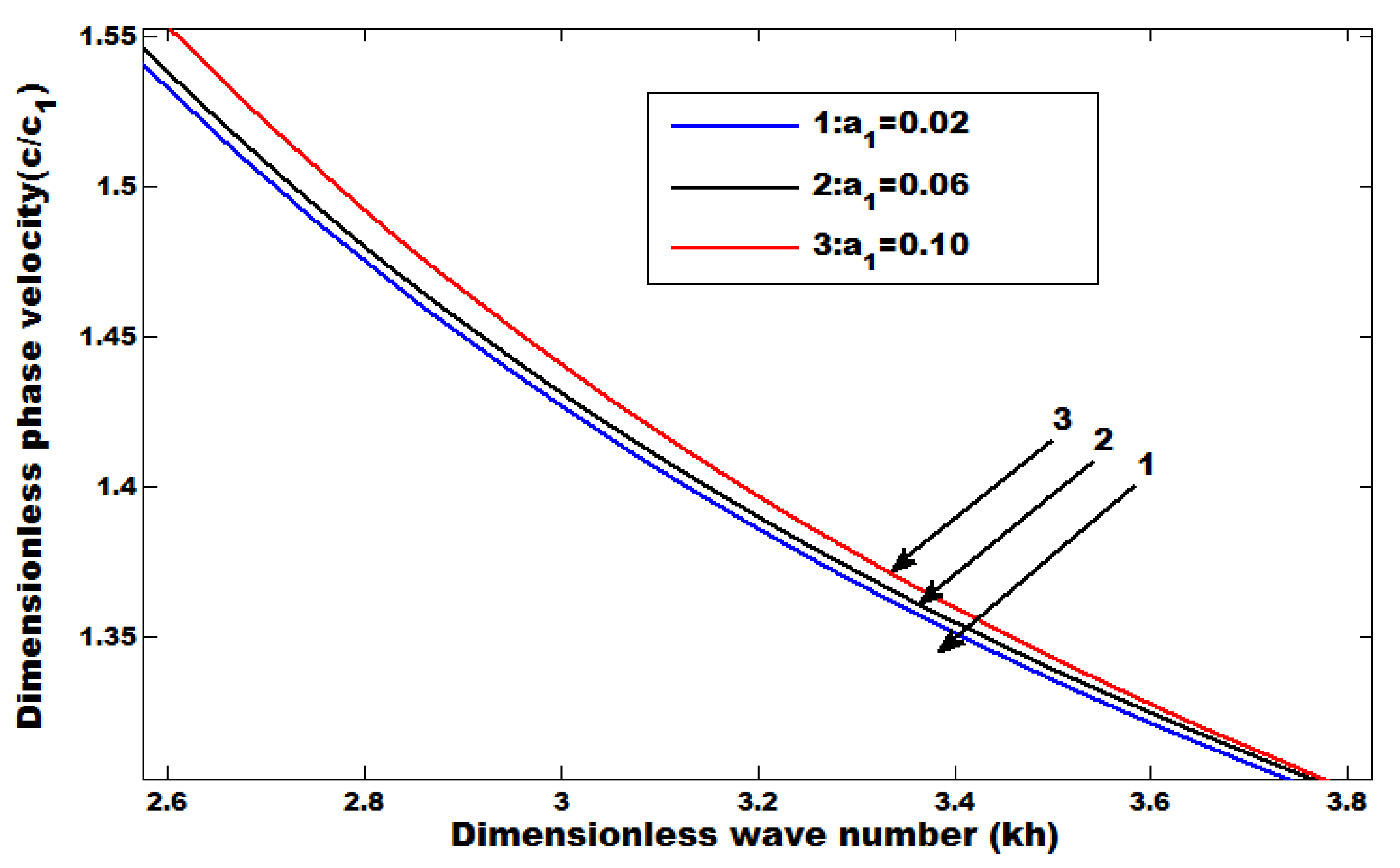
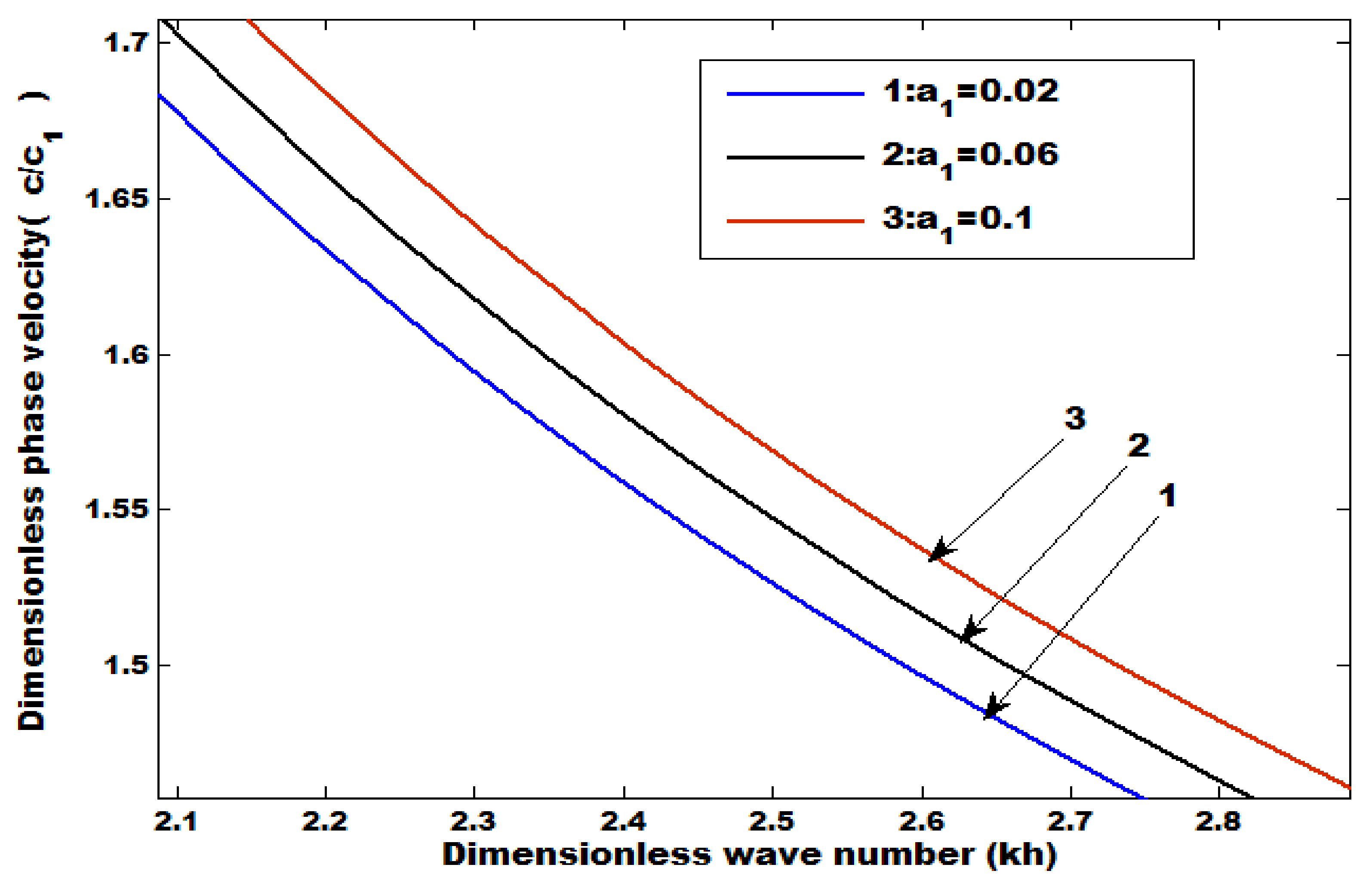

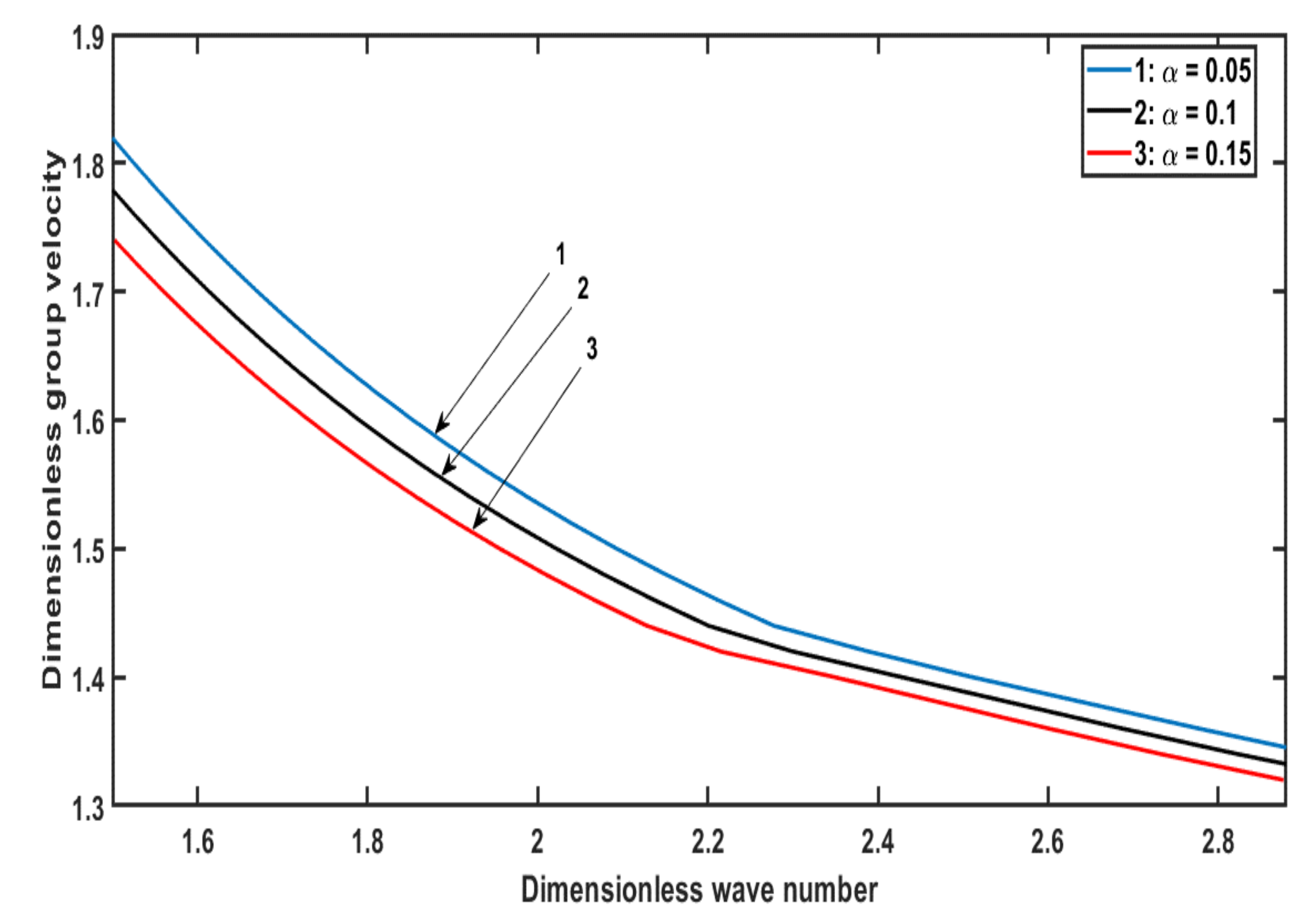

Publisher’s Note: MDPI stays neutral with regard to jurisdictional claims in published maps and institutional affiliations. |
© 2021 by the authors. Licensee MDPI, Basel, Switzerland. This article is an open access article distributed under the terms and conditions of the Creative Commons Attribution (CC BY) license (https://creativecommons.org/licenses/by/4.0/).
Share and Cite
Khan, A.A.; Dilshad, A.; Rahimi-Gorji, M.; Alam, M.M. Effect of Initial Stress on an SH Wave in a Monoclinic Layer over a Heterogeneous Monoclinic Half-Space. Mathematics 2021, 9, 3243. https://doi.org/10.3390/math9243243
Khan AA, Dilshad A, Rahimi-Gorji M, Alam MM. Effect of Initial Stress on an SH Wave in a Monoclinic Layer over a Heterogeneous Monoclinic Half-Space. Mathematics. 2021; 9(24):3243. https://doi.org/10.3390/math9243243
Chicago/Turabian StyleKhan, Ambreen Afsar, Anum Dilshad, Mohammad Rahimi-Gorji, and Mohammad Mahtab Alam. 2021. "Effect of Initial Stress on an SH Wave in a Monoclinic Layer over a Heterogeneous Monoclinic Half-Space" Mathematics 9, no. 24: 3243. https://doi.org/10.3390/math9243243
APA StyleKhan, A. A., Dilshad, A., Rahimi-Gorji, M., & Alam, M. M. (2021). Effect of Initial Stress on an SH Wave in a Monoclinic Layer over a Heterogeneous Monoclinic Half-Space. Mathematics, 9(24), 3243. https://doi.org/10.3390/math9243243






